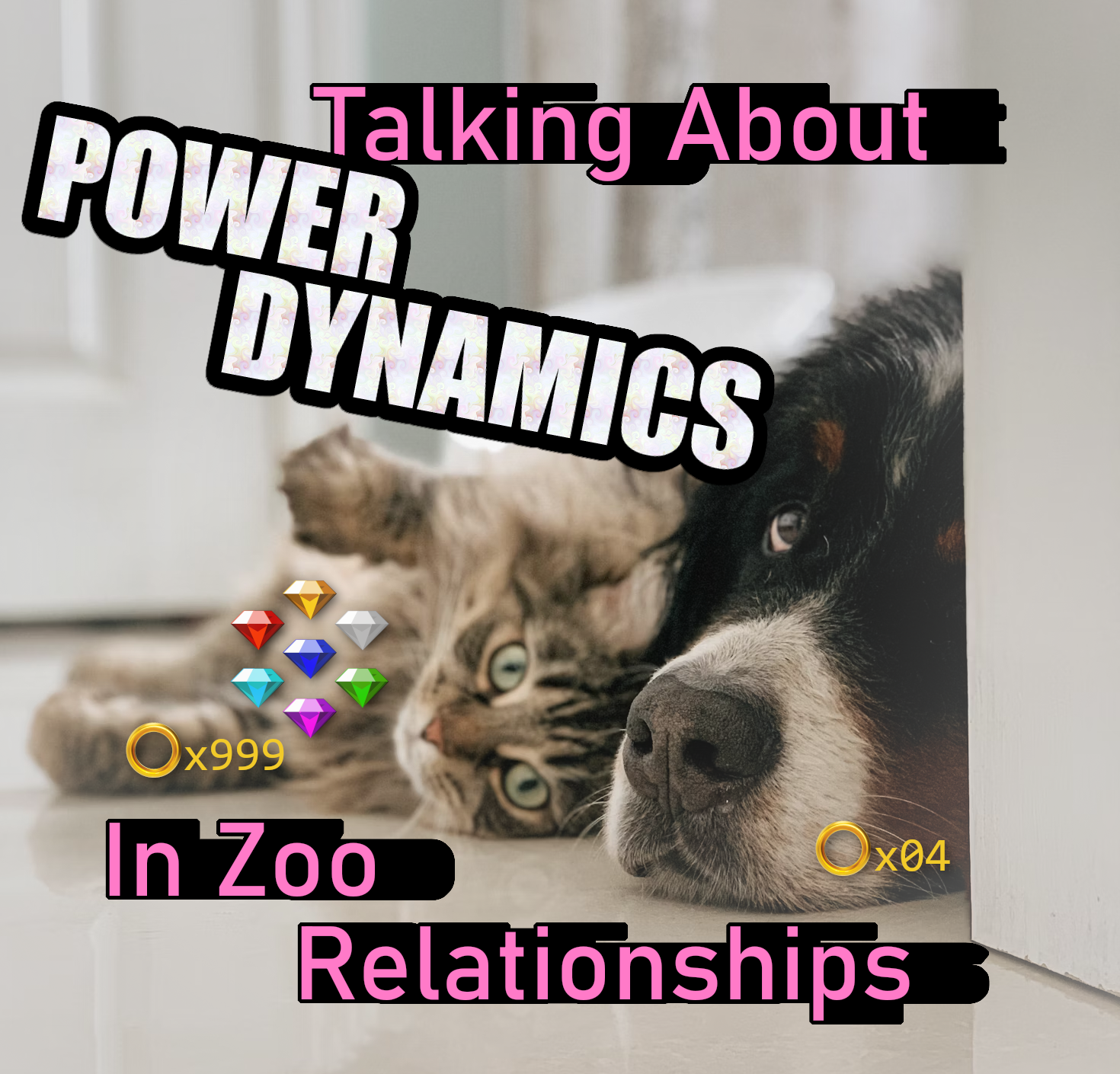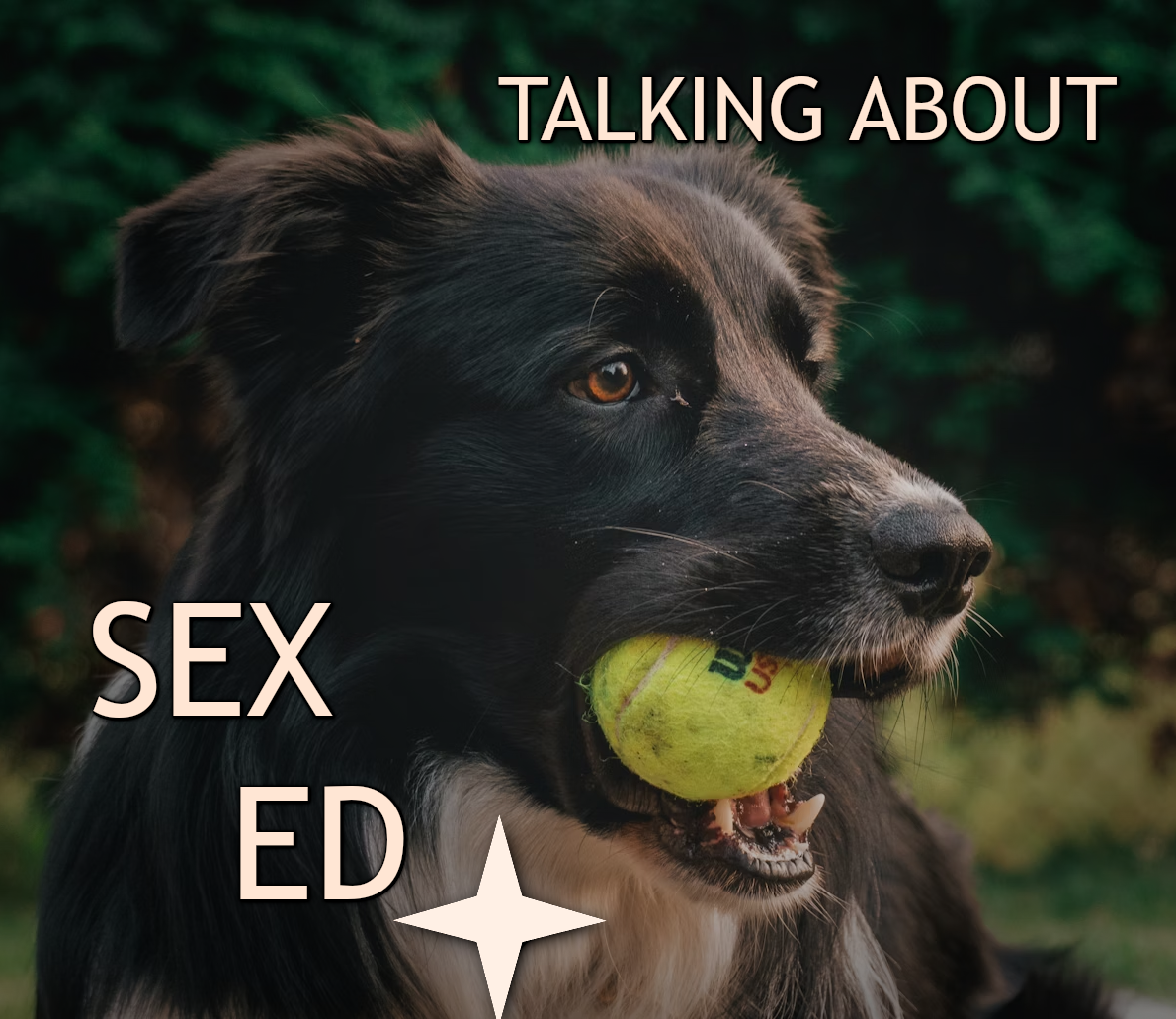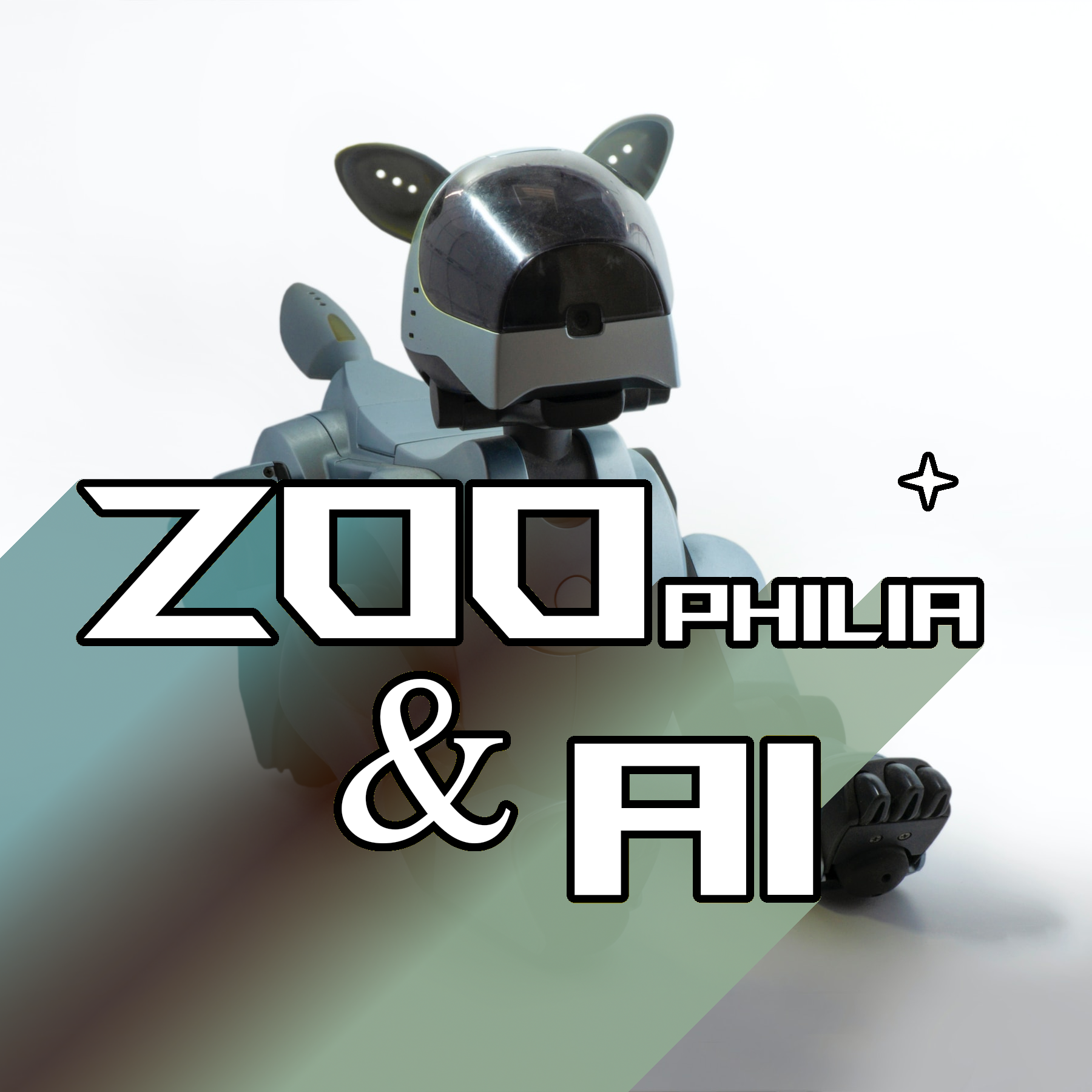Overanalyzing the Talking Animals in Narnia

Overanalyzing the Talking Animals in Narnia
[Spoilers for Narnia.]
This year I was rereading the Chronicles of Narnia series, by C.S. Lewis. As a zoo, I got to play an interesting puzzle with every book: In a world that contains humans, talking animals, non-talking animals, fauns, tree spirits, giants, living stars, living gemstones, and gods, what does C.S. Lewis think counts as a person? From my reading, the answer is not a simple “Everybody :D!” Almost every scene has some piece of the answer to this question. Is there time to get into everything, no, I wish. But I’d like to pick out what I saw as some of the more salient moments for this question. (We’ll get to the direct zoo analysis I promise, but for the meantime, read my tone and hear me saying between the lines that as a zoo I find these depictions problematic.)
There is one feature of the books that jumped out at me the most often, and it’s a pretty easy one to start with: In Narnia, who is called “he” or “she”, and who is called “it”? Generally speaking, “he” or “she” is more personifying, and “it” is more objectifying. Obviously pronouns can be fluid, and might not mean the same thing to everyone. In freeform every day speech, I might call a squirrel “it” (by mistake, as I try to use “they” for animals, but sometimes I catch myself after having said it). But in writing that was produced by an educated author, edited, and published annually over seven years, and in a series of books that has delightfully witty and charming writing throughout, we might not be wrong to say that the question of he/she vs it was something that didn’t make it into all seven books completely by accident. Or did it! Let’s try to find out.
So this is the breakdown that I noticed. Humans, with extremely rare exception, are always a he or a she, not an it. As far as I remember, the only time across all seven books that the narrator calls a human “it” is when we’re briefly in the perspective of a giant.
The talking animals can be called he/she or it interchangeably. And when I say that it’s interchangeable, I don’t just mean that this talking beaver is a “she”, and that talking mouse is an “it”: I mean that the same character can be “she” in one sentence and “it” in the next.
This interchangeable use of pronouns for the talking animals was the most interesting to me in The Horse And His Boy, because in that book, there are four protagonists–two humans and two talking horses–and so with these being the main characters of the story, it felt like we’d probably get really consistent about whether we wanted to personify the main stallion with “he”, or objectify the main stallion with “it”. But this consistency never happens. Over the course of the book, we learn the stallion can talk, we learn he’s a very proud character with a fleshed out back story, ambitions, fears, and mannerisms, and we still might call this character he or we might call this character it, and the distinction is never made for any obvious reason.
The only time the use of pronouns for animals felt deliberately pointed in that book was at the end, when one of the human villains is turned into a donkey, and moves from always being “he” to now being “he” or “it” interchangeably after the transformation. The part where it finally felt unavoidably deliberate was when the narrator calls out the switch explicitly:
*He (or it) was duly sent back by boat to Tashbaan and brought into the temple of Tash at the great Autumn Festival, and then he became a man again.*
It’s also worth noting, this is a character who is promised that he will be able to turn back into a human, which he does do later, and he keeps trying to talk during the entire transformation until his body is fully switched, which all together implies to me that he could very well be a human-minded person in the body of a donkey, and is still called an it here.
The fantasy creatures, like fauns and giants and dwarves, are overall handled similarly to how the talking animals are handled. Sometimes he/she, sometimes it; sometimes it feels like there’s a reason for it, uuusually there doesn’t.
All that said, it’s worth repeating that again, pronouns don’t always mean the same thing to everyone, and that can be especially true if we leap from the 1950s all the way to the 2020s. Even in the 1969 book The Left Hand of Darkness by Ursula K. Le Guin, one of the pillars of feminist literature and a work that serves as a pinnacle examination of gender roles, Le Guin makes a decision to primarily refer to androgynous characters with male pronouns and titles. My read on that decision was that it allowed Le Guin access to “grander” vocabulary to describe everyone, especially for a time when nonbinary verbiage was less fully pervasive. (Some years later Le Guin did state that this decision haunted her, and using “they” would have been better.)
So what might Lewis’s intentions at the time have been, as far as being consistent about he/she for humans, but he/she or it for fantasy creatures? I think it begins to reveal a world view about who counts the most as a person, vs who only semi-counts, vs who does not count.
So besides picking apart pronouns, what else can we look at to see how animals are viewed in the Narnia books? I thought it would be interesting to examine two cases that involve Lewis playing with the idea of non-talking horses vs talking horses.
The first example occurs at the genesis of the world of Narnia. Strawberry, a non-talking cab horse from our world, and Frank, who is Strawberry’s cab driver, are brought into Narnia. Not long after arriving in the new land, Aslan transforms Strawberry into a talking pegasus. As a pegasus he reflects back on his non-talking horse life, showing that even back then he did have the ability to perceive a conscious experience of the world and have opinions about it. A point is dwelt on that Frank, who becomes the first king of Narnia, is a good man because even when times were tough, he endured the toughness with the horse, and had sympathy for what the horse was going through and tried to provide care even if it was within limited means. I believe primarily this is more used as a metaphor to show how a good monarch should treat their subjects, but it does suggest that Lewis acknowledges that it is commendable on its face to have empathy for a work horse.
The other example occurs near to the apocalypse of the world of Narnia. Tirian, the last king, watches two men overworking a horse who is trying to pull logs through muddy ground. The severe strain that the horse is under is described in harsh detail. Tirian watches on with disapproval. Then, the horse finally says aloud that he’s working as hard as he can. Realizing that this is actually a talking horse, Tirian leaps forward and decapitates one of the two men. Woah that’s quite a jump in reactions! Again, the spirit is similar, it’s bad to treat horses carelessly. Having empathy for them is good. But the importance of having empathy for a horse who can talk is apparently much more of a big deal. In Narnia, humans are people, talking horses are people only a liiiittle bit lesser to humans, and non-talking horses are soooort of along the same lines as being people but alllllso they are resources if it serves the needs of the humans.
I think even within the non-talking animal kingdom though, we see tiers of personhood or non-personhood. Horses, we should at least be mindful towards. Game animals, no. Hunting in Narnia is done with not even the vaguest inkling of remorse for the bird or deer. Usually this is done passively–hunting occurs and nobody has distaste for anything about it, all of the characters are on board with the idea as a default, whether they are children seeing a bird dressed for the first time or whether they are experienced woodsmen who have been doing this all their lives.
In The Silver Chair, the three main characters set out on an adventure into a desolate land. For food along the way they hunt birds with no suggestion of any regret about taking those birds’ lives. Later on, they find themselves pausing their adventure to stay under the hospitality of giants. The giants, who had gone out hunting earlier, come back with a bird, and share some of the meat with the humans. As dinner is unfolding, and the heroes are listening in on the giants talking, we learn that the bird they are eating was actually a talking bird. The heroes stop eating at once, and feel enormous shame at what they’ve done. It’s so bizarrely close to being a pro vegan argument. Like, if there was one extra little point raised where they connected it back to the birds they had already been eating, they would feel bad about that too and learn that those non-talking birds mattered as well. But this never happens. The scene only drives home the treatment of animals that’s been unfolding.
At the end of the day, Lewis in 1961 was a Christian scholar who also had an interest in folk lore and mythology: his world view, or at least the world view that he paints Narnia as embodying, did not have a problem with saying that one creature is on top, others are below them, others are below that, etc. The way I ultimately conceptualize it with Narnia is that it’s sort of a pyramid. And the reason that a pyramid comes to mind instead of strict separated castes is because I do imagine all the people on the pyramid as sometimes being placed only slightly up and down the slopes, instead of an entire rung; maybe only a half step less than someone else instead of an entire category down, and being able to at least sit at the same table; maybe being able to accomplish some great deed and ascend as an individual up a category above what you ordinarily would have been.
At the very top portion of the pyramid, we have the pantheon of gods: Aslan the lion, Jesus Christ, and allusions to others of a similar caliber. Below that we have personifications of stars and time, who are more analogous to angelic beings and titans. Below that, now looking at the top of the terrestrial world, we have centaurs, forest spirits, human wizards, and human royalty. Below that, ordinary humans. Below that, humanoid fantasy creatures and talking animals. Waaaay below that, now scraping against inanimacy and definitely now being below personhood, we have animals that do labor for humans such as work horses and hunting dogs; no joke I would consider non-talking horses and non-talking swords to receive about the same amount of personhood and respect in the series. Below that, I think everything is sadly inanimate for all intents and purposes, including ordinary rocks, ordinary plants, and non-talking animals.
So, how was the experience of reading this as a zoo? Well, the zoo angle is bleak, but it’s not all black and white.
As a zoo, I like to think that all of the animals of our world have personhood. I would rather starve before hunting. So to see such consistent disregard for animal personhood was upsetting, from the minor slights like insisting on calling talking animals “it” at random, to the major offences like not even pretending to have to make the case that anyone should have any qualms about taking the life of a deer or a bird if they happen to not speak English.
I can say a lot of nice things about the series: the prose is a joy to read, there are a lot of fun characters, and the world feels rich and vast and mysterious and purposeful all at the same time. I would be happy to read more if lost manuscripts were ever discovered. That said, I can’t pretend like disrespect towards animals didn’t leave a very sour taste in my mouth, in every book from start to finish.
I’m not saying that every book should be devoid of character flaws or conflict, but there is a difference between a character doing a bad thing vs the book giving bad things a free pass. If one character was being human supremacist but other characters were uncomfortable with it, or the narrator seemed to take on an unpleasant tone when describing it, that’s one thing; showing human supremacy across seven books as the unquestioned way that the world works is a very different thing.
One more for the positive side: These books have really enjoyable talking animal characters in them. Aslan the lion is loving and generous, but also immensely powerful and not to be trifled with; he’s a great analogy for the religious parallels he was supposed to embody, but is also a cool character in his own right if you didn’t know who he was supposed to represent. Reepicheep the rat is such a driven and morally upright knightly gentleman, quick witted and silver tongued, and the most attractive character in the entire series by such a mountainous margin that some part of me wonders how Lewis didn’t know what he was doing there. And even just the everyday talking animal people, the beavers and badgers and rabbits and everyone, make for such a pleasant world to get to occupy. As a zoo those characters were nice to meet and those environments were nice to spend time in.
And I will also acknowledge that having a hierarchy of personhood, while it struck me as extremely distasteful in its depiction, is also not a completely alien concept. For example, I don’t wish insects harm, but if I see a dead fly on the window sill I’m unlikely to care much beyond a passing thought, whereas if I see a dead turtle on the road it lingers a little more. And if you forced me into a trolley problem situation, I don’t know how many turtles you would have to put up against a single Great Dane, but it would be more than one. In the same way that Lewis would acknowledge “Sin is tempting but must be resisted to the utmost extent that is possible of an imperfect person living in a flawed world,” I might honestly say the exact same thing but about human supremacy. It does make sense to show bad things in the world, even if it’s a fantasy world that you got to make up. But where it grates is in what’s treated by the surrounding book as being a good part of that world, or a bad part of that world.
It’s of course true that these books were written for children, but it’s clear from Lewis’s depiction of children that he recognizes them as smart, clever, and not to be talked down to, but rather, taught about things in a way that respects them. I think that if this is the world view he’s showing across all seven books in a series that has so much to do with animals, then it wasn’t an accident that this was the lesson that was meant to be taught as far as animals are concerned, even if a lot of the details might go over the head of many kids who just want to see adventures and sword fights and jokes.
As a reader, the Narnia books are great and recommendable; as a zoo, I wish the Narnia books had done better. The series isn’t without great merit, but the series also isn’t without flaw. I wouldn’t blame another zoo for liking or disliking these books. Personally I did enjoy them, but part of the intrigue about them as an adult was a curiosity of trying to understand what the deal is with this major flaw about them.
As a little note in closing, I will mention that J.R.R. Tolkien and C.S. Lewis were contemporaries, and they had spent time with each other discussing each other’s works. In the book The Hobbit, there’s a character who I got major zoo vibes from. He lives ‘by himself’ remote from other human settlements, and shares his house with animals, and is at least implied to spend time shapeshifted into a bear. It’s never said whether any of the animals are his sexually active mates - to be fair it’s not that kind of a book - but I did strongly get the impression that he regards his horses (regular, non talking horses) as his own daughters, and that horrible things would befall the adventuring party on his behalf if anyone had mistreated these animals. If they had talked about it, I am so curious what Lewis and Tolkien would have said to each other about that character. But, for my two cents, I would have liked to see a lot more of that attitude towards respect for animals in Narnia.
Article written by an Anonymous author (October 2022)
Questions, comments or concerns? Check out the discussion thread over on Zoo Community, or join our Discord!




